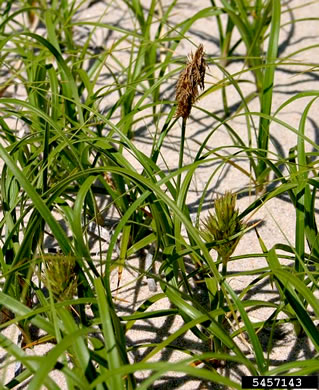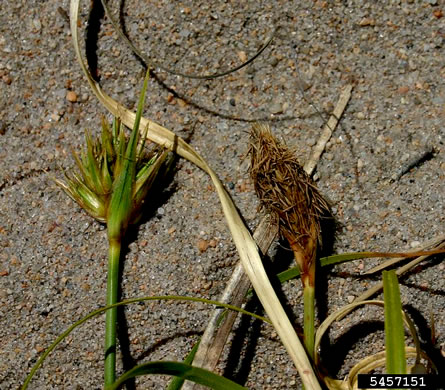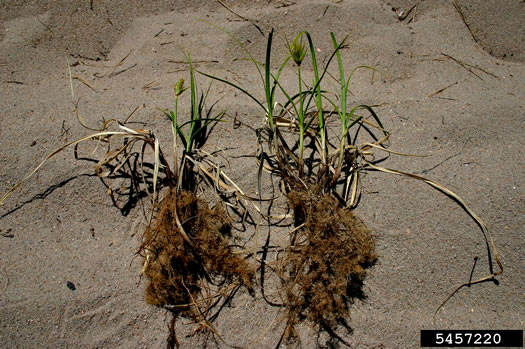Spermatophytes (seed plants): Angiosperms (flowering plants): Monocots: Commelinids: Poales
WEAKLEY'S FLORA OF THE SOUTHEASTERN US (10/20/20):
Carex kobomugi
FAMILY
Cyperaceae
Go to FSUS key
Dig deeper at SERNEC, a consortium of southeastern herbaria.
Check out EDDMapS.org to see where this has been reported.
Read more about Japanese Sand Sedge at Vascular Plants of North Carolina.
SYNONYMOUS WITH
PLANTS NATIONAL DATABASE:
Carex kobomugi
FAMILY
Cyperaceae
COMMON NAME:
Japanese Sand Sedge, Japanese Beach Sedge, Sea Isle Sedge, Asiatic Sand Sedge
To see larger pictures, click or hover over the thumbnails.
Leslie J. Mehrhoff, University of Connecticut, Bugwood.org bug_5457143
Month Unknown
A coarse-looking sedge, leaves with fine teeth that your fingers can feel, per Invasive Plants, Guide to Identification, Impacts and Control (Kaufman & Kaufman, 2007).
Leslie J. Mehrhoff, University of Connecticut, Bugwood.org bug_5457151
Month Unknown
Male & female flowers on separate plants/Fruits enclosed in a paperlike sac, per Invasive Plants, Guide to Identification, Impacts and Control (Kaufman & Kaufman, 2007).
Leslie J. Mehrhoff, University of Connecticut, Bugwood.org bug_5457220
Month Unknown
Sand burial seems to stimulate growth of rhizomes, per Invasive Plants, Guide to Identification, Impacts and Control (Kaufman & Kaufman, 2007).
WEAKLEY'S FLORA OF THE SOUTHEASTERN US (10/20/20):
Carex kobomugi
FAMILY
Cyperaceae
SYNONYMOUS WITH
PLANTS NATIONAL DATABASE:
Carex kobomugi
FAMILY
Cyperaceae
If a search such as "Carex leptalea var. leptalea" doesn't deliver the results you want, try "Carex leptalea".
Or, to minimize chances of a misspelling, try just "Carex le".
Less is more: If "pencil flower" doesn't deliver the results you want, try "pencil".




